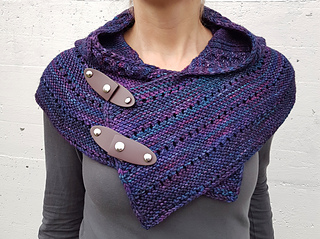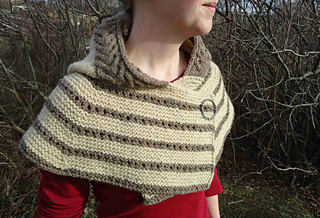patterns >  sk designs
sk designs
> Jedburgh Hooded Capelet











Jedburgh Hooded Capelet
Jedburgh Hooded Capelet is the perfect accessory to go with a winter coat lacking a hood and high collar. Wrap the capelet around your shoulders, close the front with buttons or just tuck the ends under your collar like a scarf, drape the generous hood around your neck – and you’re warm, look stylish, and don’t need to search for a hat if temperatures drop further or snowfall sets in.
Construction: All parts of the hood and capelet are worked flat; clever shaping allows for a completely seamless construction achieved with increases, decreases and picked-up stitches.
The cabled edge of the hood is worked first, then stitches are picked up for the sides and crest of the hood. The cable pattern of the crest continues down the back of the head, thereby joining the sides of the hood. Once the hood is completed, stitches are picked up around the neck for the capelet, which is worked top-down with raglan-style increases.
Skills required: Basic knitting techniques such as knitting and purling, casting on, binding off and picking up stitches. Techniques such as working cables, or different methods for increasing and decreasing stitches (including ssp and p2tog), are briefly explained. The cable patterns are charted, but easy to memorise once you’ve worked a couple of repeats.
Photo tutorials are included for cabling without a cable needle, working tubular selvedges, and the seamless construction of the hood.
The front of the capelet can be closed with buttons or a shawl pin. Most flexibility and variable styling options are achieved with screw-in closures from http://www.juldesigns.com.
This pattern includes a coupon code that gives you 10% off Oval Latch Closures and leather Pedestal Buttons when shopping from the JUL website (see page 6, “Finishing”).
Thank you to equestrianerd, KatFire, JoEmy and Strohfrau for test knitting and providing very helpful feedback, and to Jo Torr for technical editing.
54800 projects
stashed
43701 times
205021 projects
stashed
132178 times
- First published: December 2017
- Page created: December 10, 2017
- Last updated: November 26, 2025 …
- visits in the last 24 hours
- visitors right now




